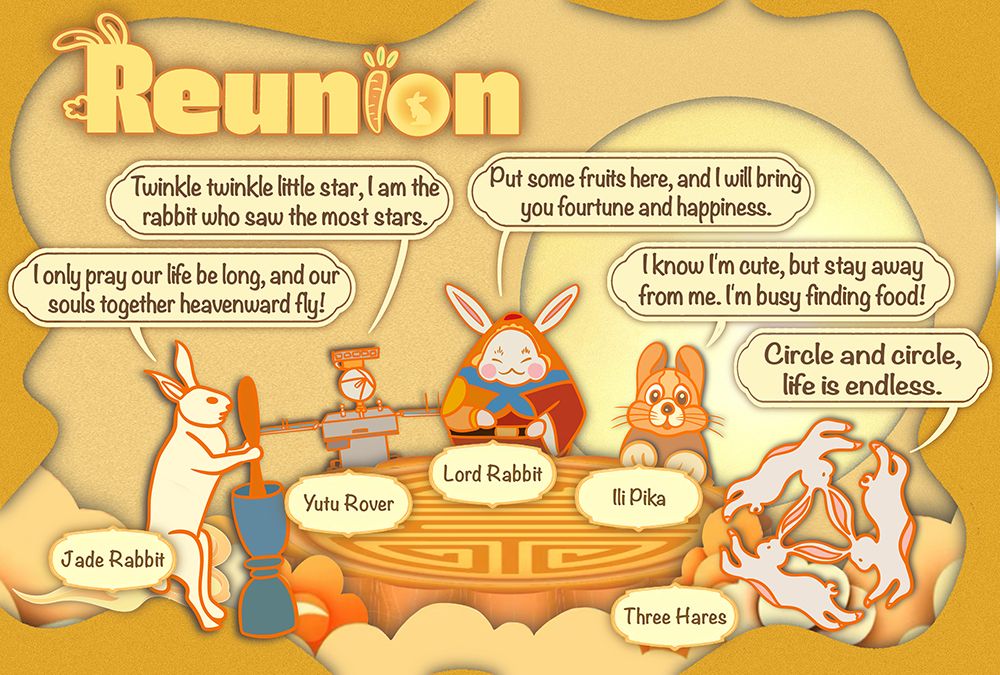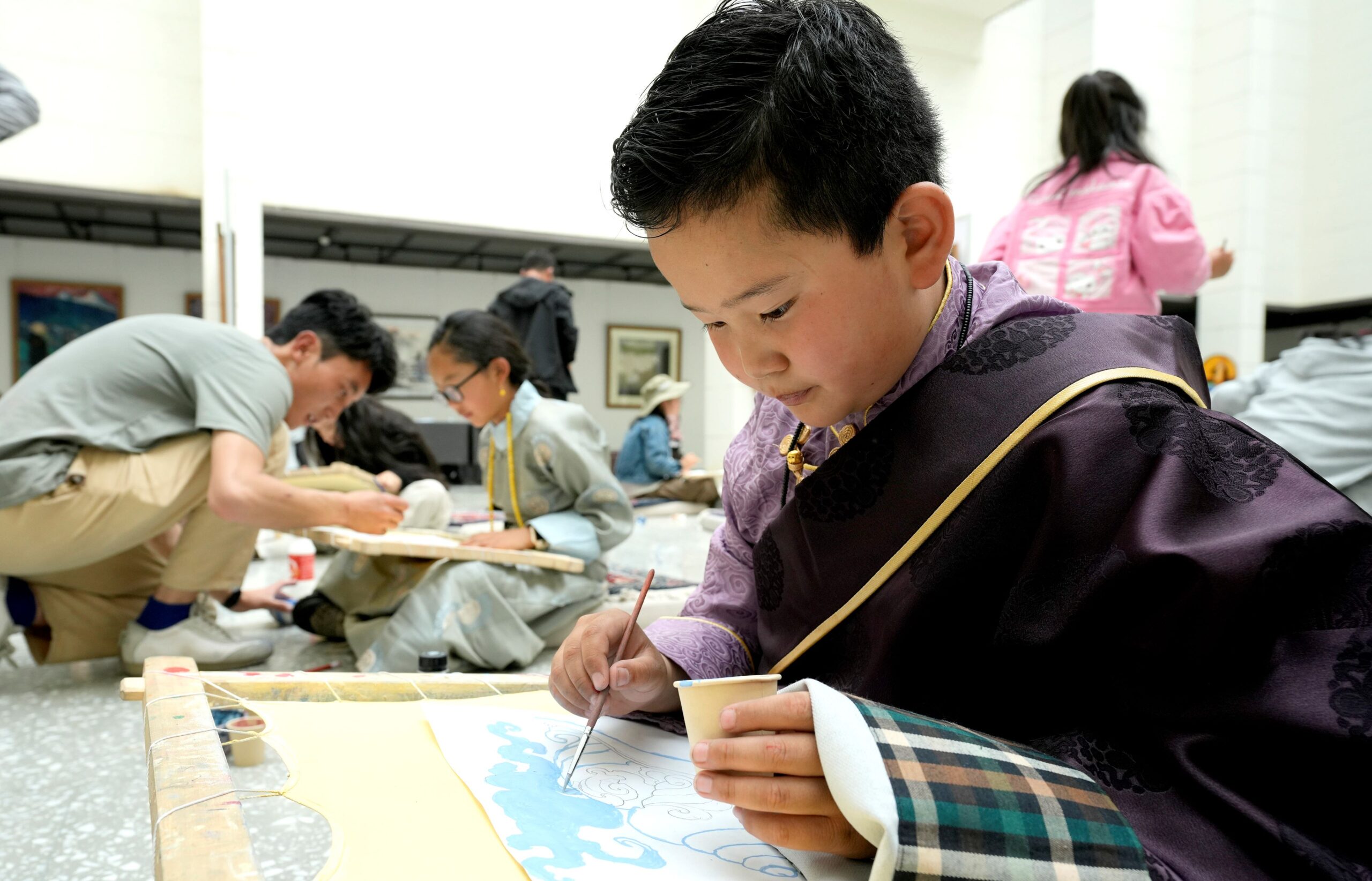With the Mid-Autumn Festival approaching, several rabbits—animals associated with the festival—have been invited to taste mooncakes on the Moon.

Jade Rabbit(玉兔)
Jade Rabbit, also called “Yutu”, is the most famous rabbit when talking about the Mid-Autumn Festival. In China’s myths and legends about the moon, the Jade Rabbit always makes the elixir of immortality with a mortar and pestle.
The Jade Rabbit is white, cute, and fluffy, which is a sign of selflessness, piety, and sacrifice. Jade Rabbit is saying a famous line from a a poem written by Song Dynasty poet Su Shi, one of the most famous poets in Chinese history. The poem is about remembering his brother on the Mid-Autumn Festival, sharing the beauty of the moon with families even though they are thousands of miles apart.
Yutu Rover(玉兔号月球车)
Another “Yutu” is a robotic lunar rover that formed part of the Chinese Chang’e 3 mission to the Moon. It reached the Moon’s surface on Dec. 15th, 2013. Yutu Rover traveled a distance of 114 meters on the Moon and completed its initial science missions.
On Jul. 31st, 2016, Yutu ceased to operate after a total of 31 months, far beyond its original expected lifetime. “I am the rabbit who saw the most stars, although it is time to say good night,” said Yutu Rover in its last message on its Weibo account. On the Mid-Autumn Festival every year, Weibo users leave best wishes under its account, hoping to wake it up.
Lord Rabbit(北京兔儿爷)
The Lord Rabbit, also called Tu’er Ye, originates from Jade Rabbit. Now, it is the “No.1 Rabbit” in Beijing.
The Lord Rabbit usually rides a tiger, elephant, or the mythical Kylin, which are all typical auspicious animals in Chinese culture. During the Mid-Autumn Festival, the Dongyue Temple of Beijing will exhibit hundreds of different Lord Rabbits for people to offer their sacrifice. It’s a unique tradition of the festival for the Beijinger. People will leave food for him, and have even create a wife for him, called “Lady Rabbit”, or “Tu’er Nainai”.
Ili Pika (伊犁鼠兔)
The Ili pika, with a teddy bear face, was discovered 40 years ago in Xinjiang. It is the only rabbit species named by the Chinese people. Now, there are only about one thousand Ili pikas, far fewer then the more famous giant pandas.
The Ili Pika lives at high elevations and subsists mainly on grasses, herbs, and other mountain plants. Because of the severe environment and air pollution, the Ili Pika was once listed as vulnerable to extinction. Now, researchers and volunteers work hard on wildlife protection in Xinjiang to try and preserve the Ili Pika population. How could anyone turn down a face like that?
Three Hares (三兔共耳)
Three hares race around in an endless circle. Each hare has two ears, but there are only three ears in total because each ear is shared by two hares. They can be seen in East Asia, the Middle East, and even in Devon. It was an architectural ornament, a religious symbol, and now you can find it in modern works of art.
People found this puzzling image for the first time on the ceilings of many caves in Dunhuang, an important stop on the Silk Road in western China. Researchers believe the image came to Dunhuang indirectly from Central Asia. Early examples of the use of the image also occurred in Islamic and Christian contexts and extended westward to southwest England. In Europe, the three hares usually appear in a prominent place in the church. It suggests the symbol held significance to the church.
Peter Rabbit (彼得兔)
Why didn’t I get an invitation?
This article was written by Yetao Gu, the picture was created by Yifan.
If you liked this article, why not read: Ding! You Have A New Mooncake Trend To Check













